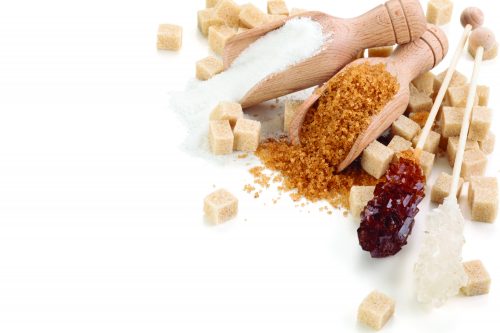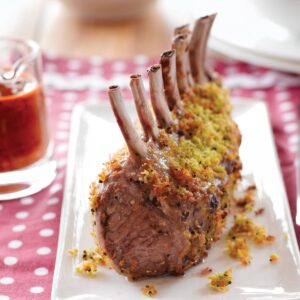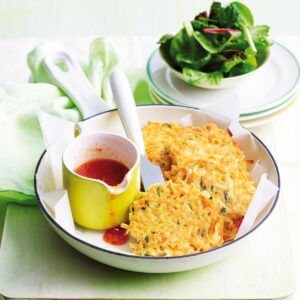
There’s nothing wrong with a little sugar, says HFG senior nutritionist Rose Carr, but as our food supply has changed many of us have realised we’re consuming way too much of it.
First up let’s focus on reducing the right types of sugars. It’s free sugars we need to worry about: all added sugars, plus any sugars found naturally in a syrup or extract. This includes any sugar you see in an ingredients list on a packaged food, plus sugars found in fruit juice, honey and syrups.
Nutrition information panels on packaged foods don’t always help, as sugars are usually all counted together. So we need to look at the ingredients list. But sugar comes in different guises. Here are just some alternative names for sugar you might see: dextrose, maltose, fructose, glucose, any kind of syrup, fruit juice, honey, molasses, corn sweeteners, or any variation of these names. And while you might find a product telling you it has “no added sugar”, if fruit juice or honey is in the ingredients list, we know it’s there to add sugars. So beware of any claims, and check for yourself.
The sugars we don’t need to worry about are those found naturally in milk, fruit, veges and grains. (For more about fruit, see our feature Should you stop eating fruit?)
A word to the wise
Before we get carried away chomping on low-sugar or sugar-free products, let’s reflect on why we need to cut down on free sugars. It’s not because they’re inherently evil. It’s because we eat too much of them so they’re linked with our increasing weight and dental decay. But let’s not swap one baddie for another! The aim is to reduce our kilojoules, protect our teeth, and at the same time focus on more nutrient-dense food.
Know your sugars
Free sugars: the ones to watch
- All added sugars, no matter what they’re called
- Any sugars found naturally in a syrup or extract, including fruit juice, honey, maple syrup, molasses, treacle, rice syrup, golden syrup and agave nectar.
Intrinsic sugars are A-OK
- Sugars are naturally found in milk, whole fruit, veges and even grains. They’re fine. These come packaged with a whole lot of other valuable nutrients, and we don’t tend to overconsume them as all those other nutrients make us feel full. They don’t rot our teeth either.
See our meal-by-meal comparison below.
Breakfast
High sugar = 10 teaspoons sugar
- 3/4 cup Kellogg’s Nutri-Grain cereal with 3/4 cup trim milk
- 1 slice grainy toast with 1 tablespoon honey
- 1/2 cup fruit juice
- 1990kJ
- 40g free sugars
We chose the Nutri-Grain cereal as since it doesn’t have dried fruit in it, we know all the sugars are added. But that’s not the reason this breakfast is so high in free sugars — the cereal adds only 9g. The tablespoon of honey has just over 16g free sugars, and the 1/2 cup of fruit juice a little over 14g. None of these ingredients are in themselves bad; we just need to be aware that if we’re having sweet things at every meal and snack, they add up very quickly.
Low sugar = 0 teaspoons sugar
- 2 poached eggs on 2 slices grainy toast
- 1/3 avocado
- 2 tomatoes
- 1900kJ
- 0-2g free sugars
The low-sugar breakfast will keep you going for a lot longer than the high-sugar breakfast, which has similar kilojoules. There could be a very small amount of added sugar in the bread.
Lunch
High sugar = 6 1/2 teaspoons sugar
- 1/2 can regular baked beans
- 2 slices toast
- 2 Tim Tam biscuits
- 2210kJ
- 26g free sugars
Even though baked beans are a great food, they can be high in sugar (around 8g in 1/2 can), so choose brands with less sugar or make your own. The 2 biscuits add 18g of free sugars to our day.
Low sugar = 0 teaspoons sugar
- Spiced tuna and rice
- 1 x Peanut and cocoa ball
- 2180kJ
- 0g free sugars*
*Our peanut and cocoa ball has 13.8g sugars from the dried fruit — dates, sultanas and prunes. So, yes, fresh fruit would be better still, but at least the dried fruit comes with lots of other nutrients, including fibre.
Dinner
High sugar = 7 1/2 teaspoons sugar
- Homemade sweet and sour chicken with rice
- Meringue nest with 1/2 cup berries
- 1/4 cup Greek yoghurt
- 2900kJ
- 30g free sugars
A modern sweet and sour chicken recipe has around 12g free sugars, and this doesn’t include the sweetness from the pineapple pieces. The meringue nest adds a whopping 18g free sugars, so save these for special occasions.
Low sugar = 3/4 teaspoons sugar
- Malaysian chicken curry
- 1 slice Chia and walnut slice
- 2725kJ
- 3g free sugars
Unlike many of our dinner recipes, this Malaysian chicken curry includes a teaspoon of sugar, which goes to show we don’t need to be completely afraid of sugar.
Snacks
250ml (1 cup) sugar-sweetened soft drink, eg. lemonade or cola
- 28g free sugars
- 7 teaspoons
Milo made with 3 teaspoons Milo and 250ml trim milk
- 7g free sugars
- 1 3/4 teaspoons
2 Cameo Creme biscuits
- around 10g free sugars
- 2 1/2 teaspoons
1 small bar milk chocolate
- around 25g free sugars
- 6 1/4 teaspoons
Sugar-free snacks
- 1–2 cups natural air-popped popcorn = 0g free sugars
- 25–30g nuts = 0g free sugars
- Small bunch grapes = 0g free sugars
- 1 mandarin = 0g free sugars
This vs that
Yoghurt
You won’t see free sugars listed on the nutrition panel. We’ve compared the sugars of a range of yoghurts to make this estimate.
150g pottle sugar-sweetened
- around 17g free sugars
- 4 1/4 teaspoons
150g pottle unsweetened or non-sugar-sweetened
- 0g free sugars
Fruit salad (pear, peach, pineapple)
3/4 cup canned fruit salad in syrup, drained
- around 12g free sugars
- 3 teaspoons
3/4 cup homemade fresh fruit salad
- 0g free sugars
<!–?php<!–?php<!–?php<!–?php
The World Health Organization recommends ideally no more than 6 teaspoons of free sugars per day.
www.healthyfood.com










